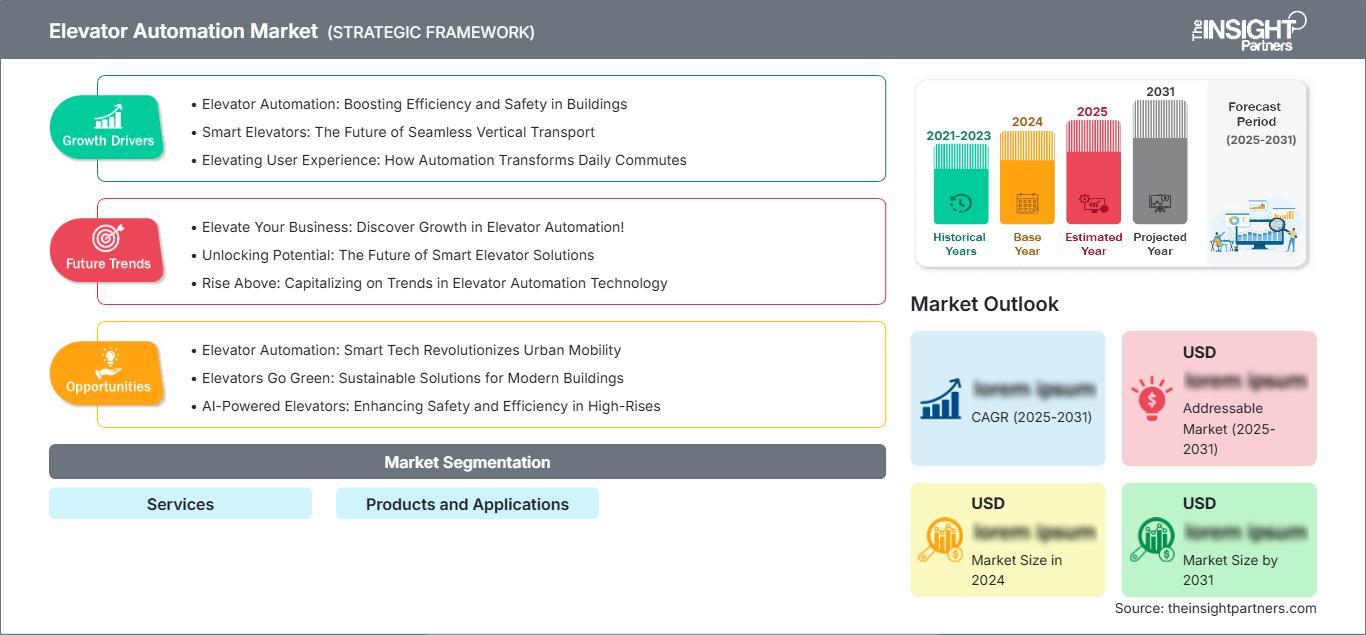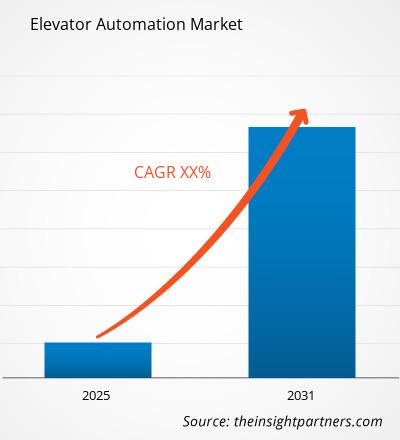页面已更新 :
May 2018
自动电梯利用先进技术来提高效率,实现电梯的合理垂直运行,并改善交通管理。智能电梯有助于提高能源效率并提供先进的目的地调度解决方案。这些系统还提供最新的数字安全措施(例如门禁系统)和触摸屏。内置自动化功能的自动电梯比传统电梯拥有更多优势。这些电梯预装的自动化功能可显著减少候梯时间,从而推动了全球电梯自动化市场的发展。为了节省运行过程中的能源浪费,对节能电梯的需求日益增长,这推动了自动电梯的推广应用。此外,对建筑物(住宅、商业和机构)开发和安全的日益关注也刺激了全球电梯自动化市场的需求。快速的城市化和建筑项目支出的增加也引发了对自动电梯及其相关控制系统的需求。阻碍全球电梯自动化市场发展的主要因素是自动电梯的高昂制造成本。此外,在建筑物中安装自动电梯的高昂成本也抑制了全球电梯自动化市场的增长。由于上述原因,自动电梯的普及率非常低,预计这一因素的影响将在预测期内消退。此外,由于计算机和自动化技术的快速发展,智能电梯的概念预计将很快融入产品(智能自动电梯),从而有望推动全球电梯自动化市场的发展。安全性是推动对更先进、更精密电梯需求的主要考虑因素,因此,智能电梯部署在入口系统,以防止未经授权的访问和尾随。它们还通过各种识别和验证技术提供充分的保障。此外,能源效率和集中控制预计将成为智能电梯普及的关键因素。关于提高效率和节能的法规和标准预计将促进全球电梯自动化市场的增长。全球电梯自动化市场已根据服务细分为安装服务、维修和保养服务以及现代化服务。此外,全球电梯自动化市场根据电梯门禁等产品细分。安防、自动化与控制、生物识别、触摸屏和键盘、读卡器、安防控制、传感器以及电梯现代化。此外,全球电梯自动化市场根据应用领域进行细分,包括住宅领域、商业领域、工业领域、机构领域和基础设施领域。从地理上看,全球电梯自动化市场已细分为北美、欧洲、亚太地区 (APAC)、中东和非洲 (MEA) 以及南美 (SAM)。目前,致力于改善基础设施和推出技术先进产品的北美和欧洲等发达地区引领着全球电梯自动化市场。由于潜在用户数量庞大,预计亚太地区的电梯自动化市场在预测期内将大幅增长。全球电梯自动化市场的主要参与者包括通力株式会社、日立株式会社、博世安防系统、富士达、蒂森克虏伯股份公司、三菱电机株式会社、现代电梯有限公司、奥的斯电梯公司、迅达、霍尼韦尔国际公司和泰科等。


自定义此报告以满足您的要求
您将免费获得任何报告的定制,包括本报告的部分内容,或国家级分析、Excel 数据包,以及为初创企业和大学提供超值优惠和折扣
电梯自动化市场: 战略洞察

-
获取本报告的主要市场趋势。这个免费样本将包括数据分析,从市场趋势到估计和预测。
电梯自动化市场区域洞察
The Insight Partners 的分析师已详尽阐述了预测期内影响电梯自动化市场的区域趋势和因素。本节还讨论了北美、欧洲、亚太地区、中东和非洲以及南美和中美洲的电梯自动化市场细分和地域分布。
电梯自动化市场报告范围
| 报告属性 | 细节 |
|---|---|
| 市场规模 2024 | US$ XX million |
| 市场规模 2031 | US$ XX Million |
| 全球复合年增长率 (2025 - 2031) | XX% |
| 历史数据 | 2021-2023 |
| 预测期 | 2025-2031 |
| 涵盖的领域 | By 服务By 产品和应用 |
| 覆盖地区和国家 |
北美
|
| 市场领导者和主要公司简介 |
|
电梯自动化市场参与者密度:了解其对业务动态的影响
电梯自动化市场正在快速增长,这得益于终端用户需求的不断增长,而这些需求的驱动因素包括消费者偏好的不断变化、技术进步以及对产品优势的认知度不断提高。随着需求的增长,企业正在扩展产品线,不断创新以满足消费者需求,并抓住新兴趋势,从而进一步推动市场增长。

- 获取 电梯自动化市场 主要参与者概述
- 历史分析(2 年)、基准年、预测(7 年)及复合年增长率
- PEST和SWOT分析
- 市场规模、价值/数量 - 全球、区域、国家
- 行业和竞争格局
- Excel 数据集
近期报告
客户评价
购买理由
- 明智的决策
- 了解市场动态
- 竞争分析
- 客户洞察
- 市场预测
- 风险规避
- 战略规划
- 投资论证
- 识别新兴市场
- 优化营销策略
- 提升运营效率
- 顺应监管趋势
我们的客户































87-673-9708

ISO 9001:2015





 获取免费样品 - 电梯自动化市场
获取免费样品 - 电梯自动化市场